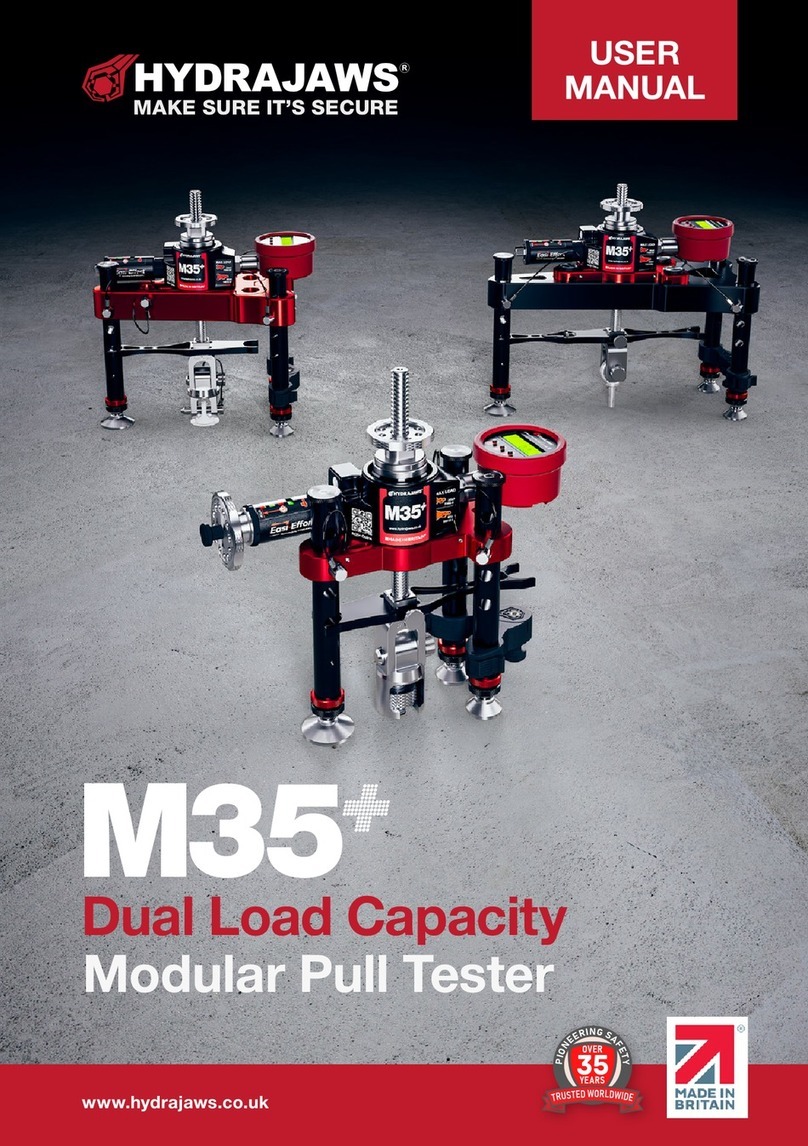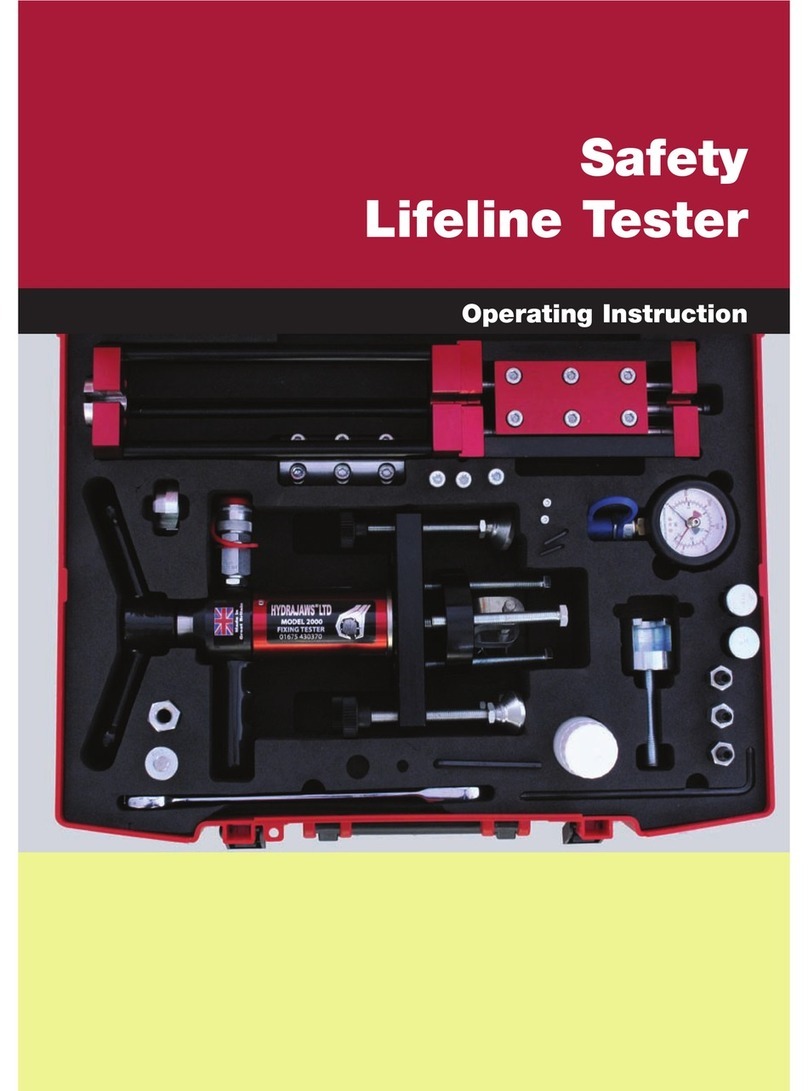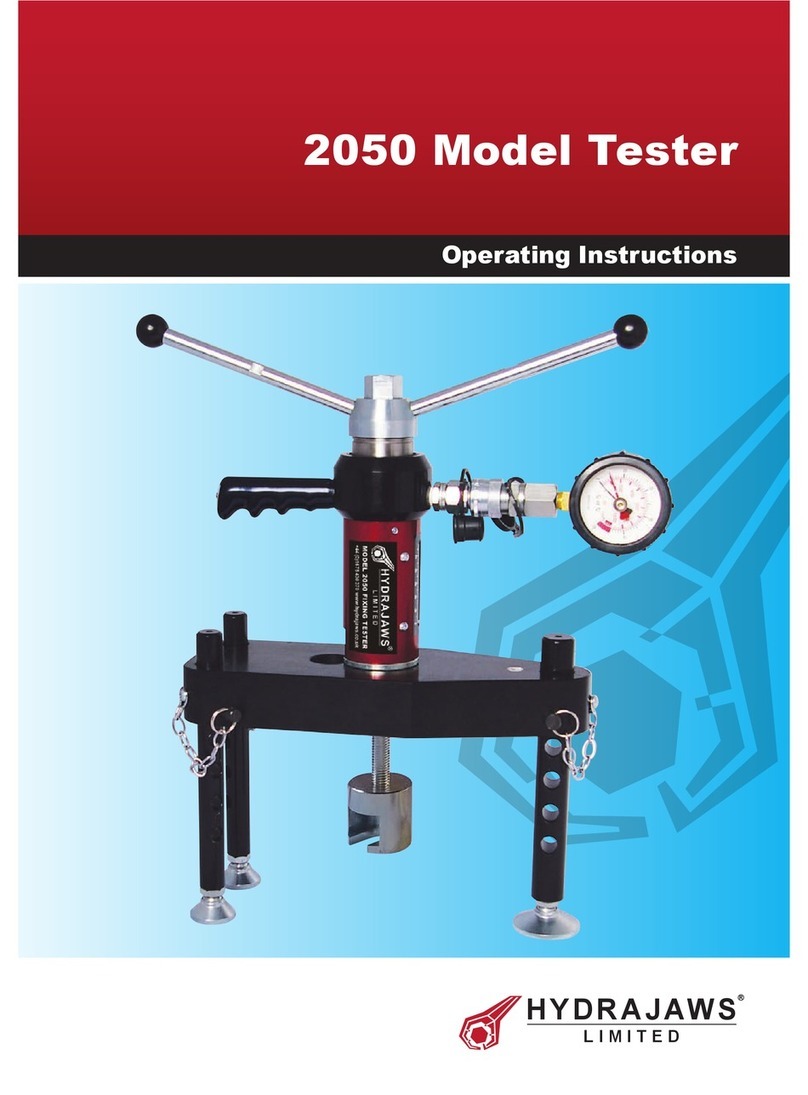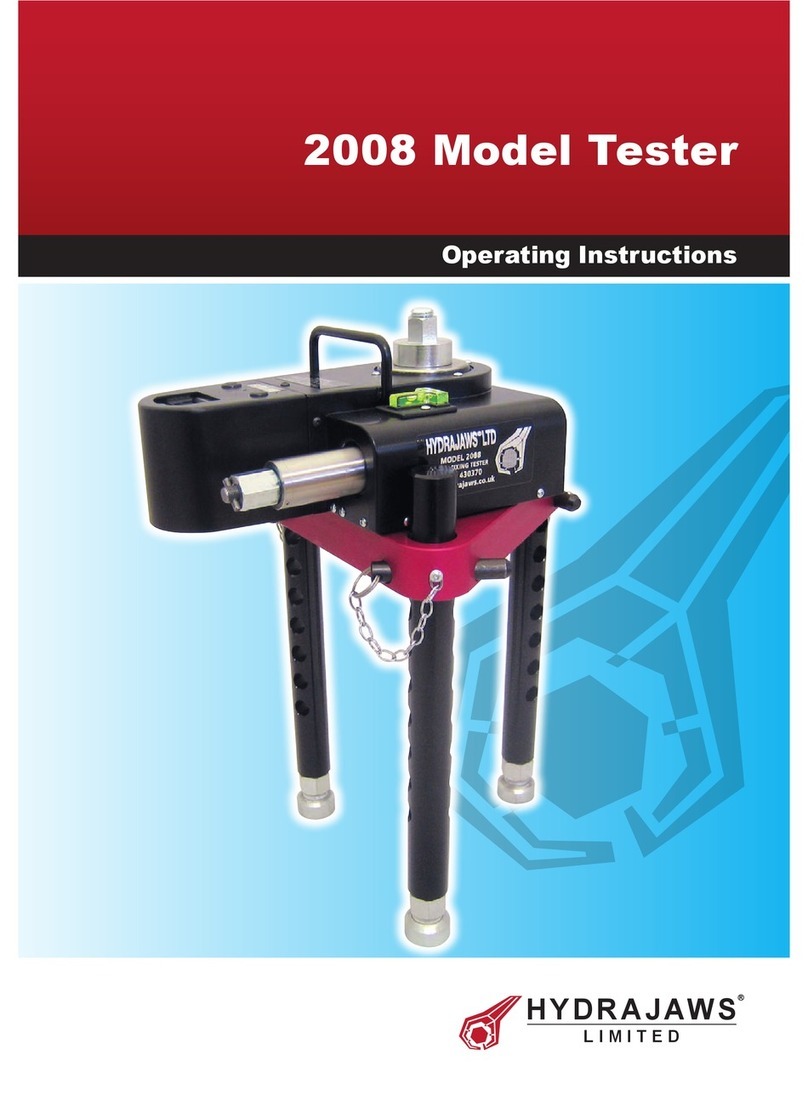
1716
5. WALL TIE TESTER KIT Position the test meter so that the
gauge is in the most convenient
place to read it. Whilst holding
the test meter body steady, turn
the loading handle clockwise to
increase the load on the anchor.
Note: Do not let go of the tester
before the load has been removed.
When the load starts to increase
note the scale reading on the
displacement scale behind the
gauge on the test meter body.
Keep increasing the load until the
required load is achieved (for test
load please consult manufacturers
KIT CONTENTS:
• M2000 Medium Duty Tester with
Digital/Analogue Gauge to 25kN
• Wall Tie Spacer Bridge
• M5 & M6 Wall Tie Adaptors
• Calibration Certicate
• Padded Carrying Case
SITE TESTING OF
WALL TIES
The purpose of carrying out site tests on
wall ties is either as part of a site survey to
investigate the suitability of the base
material for the use of a particular tie or
during the installation of the ties to verify
the quality of the installation.
OPTIONAL ADAPTORS
Optional adaptors are available for non-threaded ties.
For example, the Helix wall tie (pictured on right) has a
special adaptor to enable testing.
Please contact us for information on our range of
special adaptors.
Fig 25
Fig 24
In accordance with the BBA recommendation on Remedial wall ties it is required that
the rst 3 ties in a building should be tested followed by 1 tie in every 20 installed. BRE
Digest 401 ‘Replacing wall ties’ species that the inner end of the rst 20 ties installed on
a contract should be all proof tested and that a reducing rate of testing is required for the
remaining ties, for 21 to 250 ties 10% should be tested, for 251 to 1000 ties 5% should be
tested and for more than 1000 ties 2.5% should be tested.
LOAD PROCEDURE
Generally the loading procedure for
testing wall ties is the same for both ends
of wall ties regardless of whether they are
mechanical and chemical xings, so the
loading procedures which follow. Connect
the wall tie adaptor complete with the M12
threaded button adaptor to the end of the
wall tie, taking care not to tighten the outer
leaf expansion nut (g 24).
With the test meter securely attached to
the Bridge, adjusting the length of the legs
on the loading bridge and the position of
the button adaptor if necessary, pass the
adaptors through the keyhole slot in
the loading bridge and ensure that the
button adaptor is centred in the test
meter (g 25).
Use the adjustable swivel feet to take up
the slack in the system and to ensure that
the test meter is axially aligned with the
wall tie under test.
DO NOT LOAD THE
TIE WITH THE
SWIVEL FEET.
a
b
1
2
3
Note: A sample of the tie may be required to conrm the right adaptor is supplied.
recommendation). Some indication of the displacement of the tie can be obtained by
comparing the reading form the displacement scaled while the xing is under load with the
rst reading noted. To release the load rotate the handle anti-clockwise and push down
until the original position is resumed. Lift the test meter off the stud adaptor and unscrew
the adaptor and studding.
PROCEDURE, INNER LEAF
Install the tie into the inner leaf in accordance with the method statement appropriate
to the wall tie being used. If appropriate leave the resin mortar to cure for at least the
recommended curing time. Load the tie in accordance with the procedure given above.
If the displacement of the tie is judged to be excessive then the quality of the x into the
base material is suspect. Remove the testing assembly and complete the installation
of the tie in accordance with the appropriate method statement.
PROCEDURE, OUTER LEAF, MECHANICAL CONNECTIONS
It is not possible to test the outer leaf in isolation on a normally installed tie.
For inset wall ties - ensure width of hole (a)
is wide enough to accommodate the wall
tie adaptor and is set deep enough (b).
NOW AVAILABLE: WALL TIE TESTER KIT MK 2
The Hydrajaws Wall Tie Tester Kit Mk2 is used for testing all types
of remedial wall tie to meet the requirements of DD140. It is used
with appropriate adaptor and mounts direct to tester.
The Mk2 Kit comes with M5 and M6 threaded rod adaptors and a
selection of adaptors are available to suit a wide range of wall ties.

































